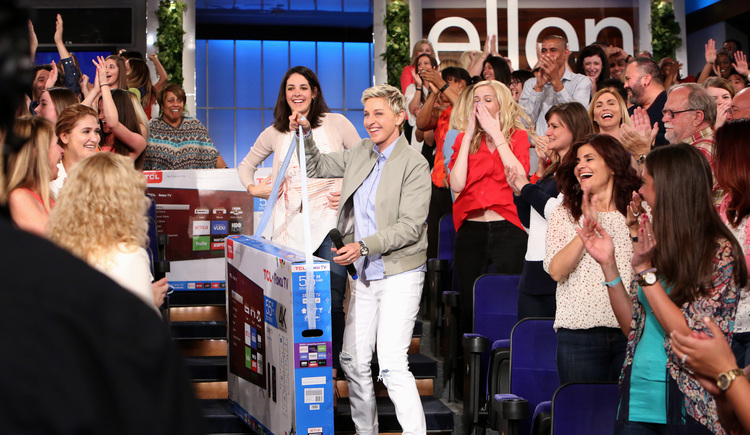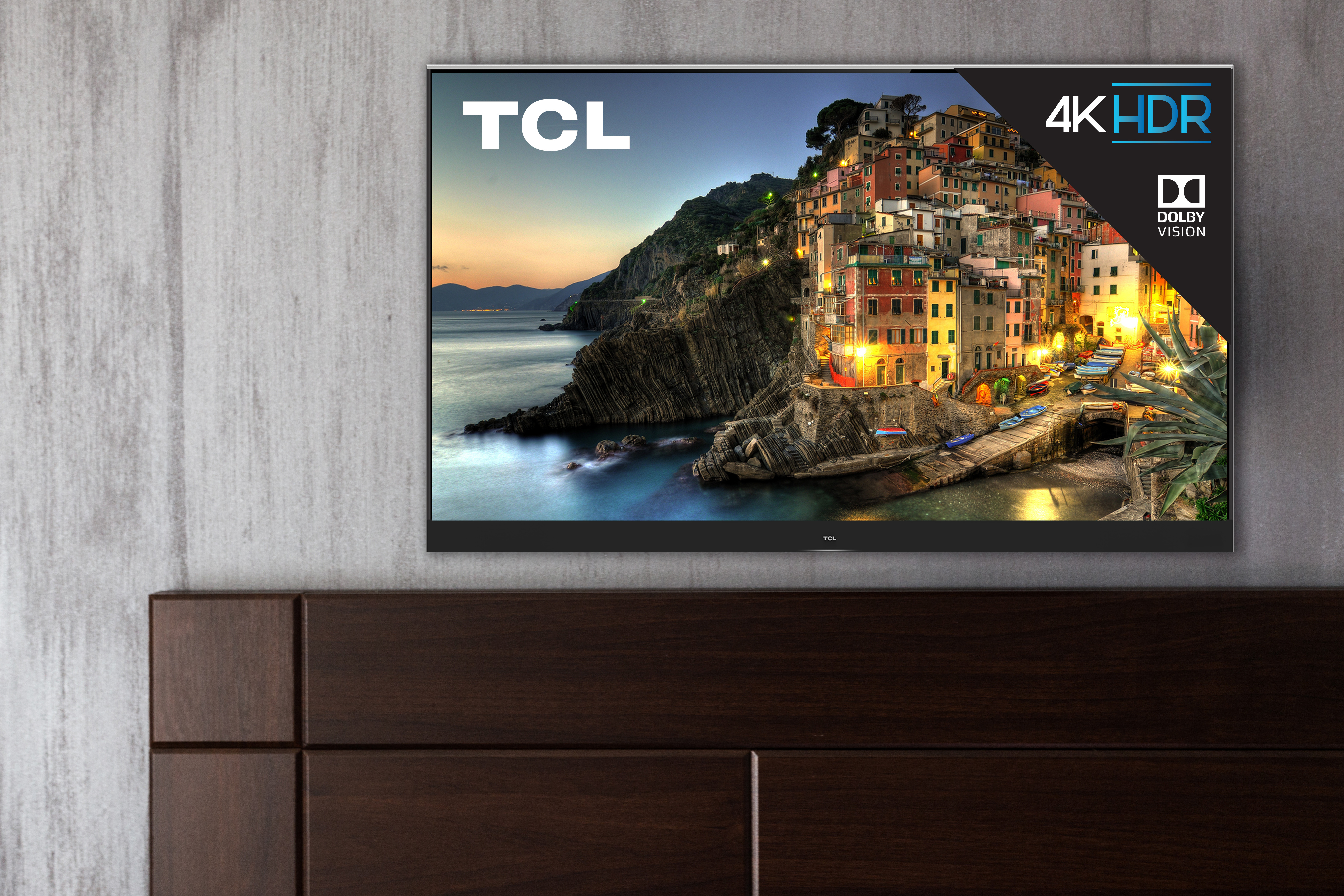TCL eyes the throne as one of the world's top TV makers

“It can be overwhelming to walk into a retailer and see all the TVs on the wall. All their settings are cranked up to compete with one another,” Chris Larson, Senior Vice President, TCL tells us at a recent briefing held at Dolby Labs in San Francisco, Calif.
The discussion was about how TCL TVs … well, all TVs really, are calibrated differently for stores than they are for your home. It’s a trick TV manufacturers have been using for years – turning saturation levels up to sickening levels while cranking the brightness up to its maximum level. It’s intense, definitely, and more than a little deceitful.
But let’s not focus on that god-awful practice for a minute. Let’s focus on the wall of TVs.
For anyone who knows the difference between a composite and component cable, this wall is a visual chocolate factory – each television offering a different flavor of eye candy. We love walking into a Best Buy or Tesco to see what’s new in the world of pixels and panels. We comment on how this LG OLED might look better than Samsung’s new QLED screen, at least in terms of contrast, and quibble over whether Android TV is the best or the worst thing to ever happen to televisions in the last century.
But for others, like my parents, this section of the store – and in particular this wall of TVs – is nothing but a bunch of seemingly identical screens. Who makes a better OLED really isn’t on their list of concerns. I’ve tried to explain Quantum Dot, Dolby Vision, HDR and dozens of other technologies over the years to my parents and, honestly, they’re not interested. As long as the TV looks good and doesn’t cost much, they’re happy.
If you want to know how TCL (an acronym that at one point stood for True China Lion) became the third largest TV manufacturer in the world, it’s through people like my parents.

Quality, performance and value
Sorry, that last bit makes it sound like TCL doesn’t make very good TVs. They do. I mean, they’re not exceptional in the same way the LG Signature Series W7 OLED or the Samsung Q9F QLED TV are, but they’re quite good – especially now that they support Dolby Vision.
Sign up for breaking news, reviews, opinion, top tech deals, and more.
The reason for my visit to Dolby Labs was to check out TCL’s 2017 line-up. Two series from last year are getting a refresh (the P- and S-Series) while TCL is introducing a completely new line called the C-Series that taps into contemporary aesthetics and adds support for most HDR sources.
These TVs look good and, according to Larson, will also be priced fairly. If you’re looking for a way to help differentiate TCL from the masses of TVs on the aforementioned wall, it’s their brand promise: Delivering uncompromised experiences at a recognized value with an attractive cosmetic.
It’s a promise that seems to be harder and harder to keep every year now that new Chinese TV makers like Hisense and LeEco have moved into the market. To me, this seems like something worth fretting over, but it didn’t seem to scare anyone in that office.

Larsen told me there were already branding programs in place to help make TCL a household name. “We have a partnership with the Ellen Show and the Minnesota Timberwolves. Plus, we acquired the TCL Chinese Theater down in L.A.” Other ties include UCLA athletic teams, the San Jose Earthquakes (a MLS team based in Northern California) and the Rose Bowl, one of the biggest football games in the NCAA.
And while the list is impressive, I’m not sure a few sponsorship deals will be enough to beat out the most ubiquitous names in television like Sony, Samsung and LG – each of whom have a long and storied career in American families’ living rooms. But maybe it will be.
The grand plan
So what’s the end goal here? If TCL got this far in the TV world without an insane amount of brand recognition, why does it want to change anything?
According to Larsen, it's easy to sell smaller value TVs. It’s a crowded market, sure, but in the end value always beats out performance. But being the main screen in the house? That’s much, much harder. To get to the coveted center of the home you’ve not only got to look good in terms of picture quality and cost less than everyone else, but you need a decent design aesthetic, too.
And according to Aaron Dew, Director of Product Development at TCL, that’s where this year’s all new C-Series come in.

The new series will go on sale in late June and combines “contemporary design” (Dew’s words) and the latest in 4K HDR technology. As far as operating systems go, the TVs use Roku OS 7.5 – a close relative of the operating system used on Roku streaming boxes like the Roku Ultra, Roku Premiere+ and Roku Express.
The C-Series will come in 55-, 65- and 75-inch versions and will include both HDR10 and Dolby Vision. (HLG is something TCL is looking into, but not actively including on any TV this year.) They'll feature wide color gamut with advanced LED phosphor for more realistic colors, brighter highlights and increased light-to-dark contrast and support almost 100% of the DCI-P3 color space.
I left the demo impressed with what I saw. The Dolby Vision integration helped add some pizzazz to TCL’s panels, while Roku OS provided a familiar face that I knew could help me find the content I’ve been looking for.
And yet, I couldn’t help but think back to that wall.
When TCL’s latest series make it to showrooms in late June, will my parents be blown away by Dolby Vision? Will they care that the 2017 P-Series now has 72 Contrast Control Zones that increase contrast and clarity? Maybe. Maybe not.
But considering that TCL’s 55-inch C-Series TV, the 55C807, goes for $699 (around £540, AU$950), I guess it doesn’t matter.

Nick Pino is Managing Editor, TV and AV for TechRadar's sister site, Tom's Guide. Previously, he was the Senior Editor of Home Entertainment at TechRadar, covering TVs, headphones, speakers, video games, VR and streaming devices. He's also written for GamesRadar+, Official Xbox Magazine, PC Gamer and other outlets over the last decade, and he has a degree in computer science he's not using if anyone wants it.